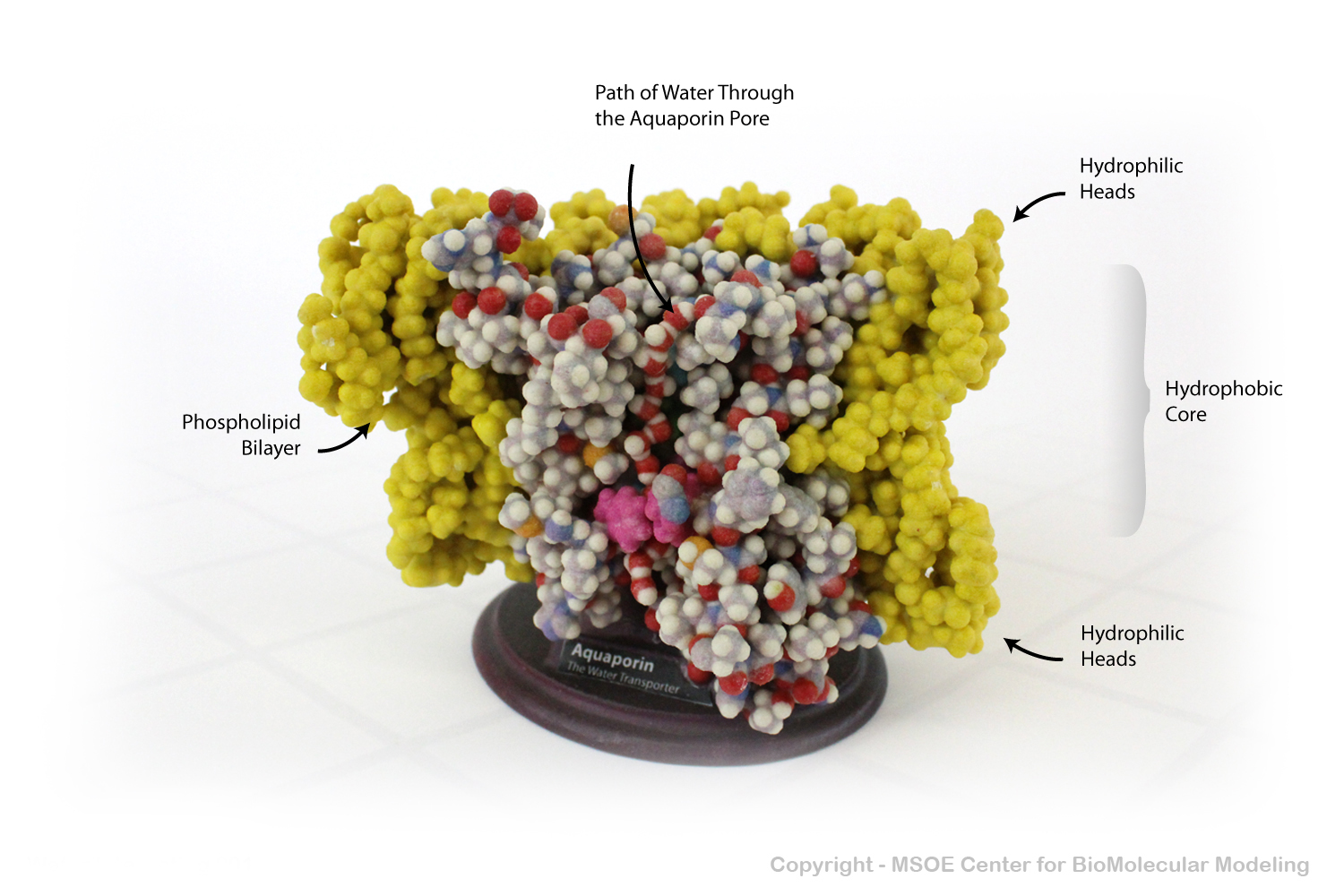
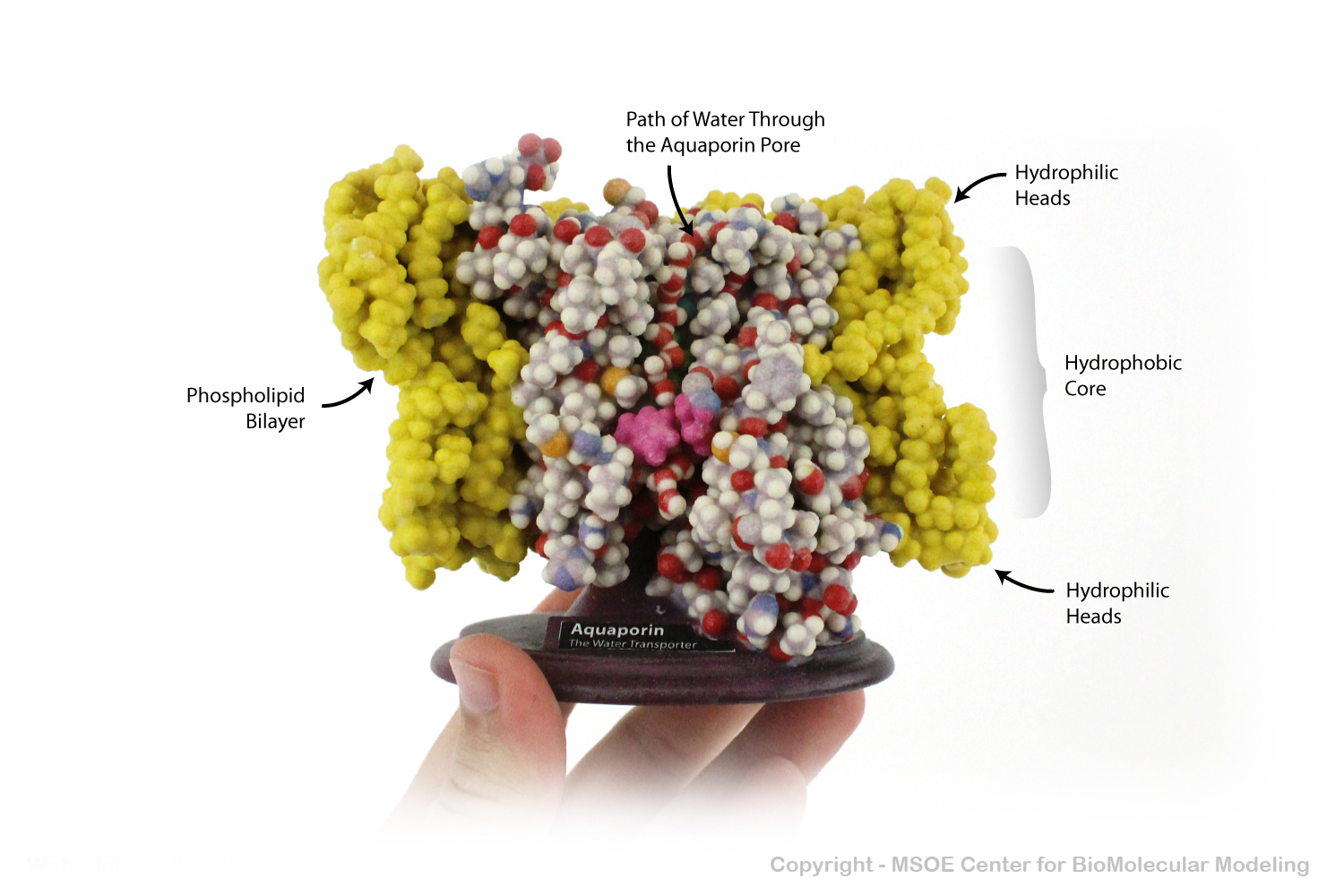
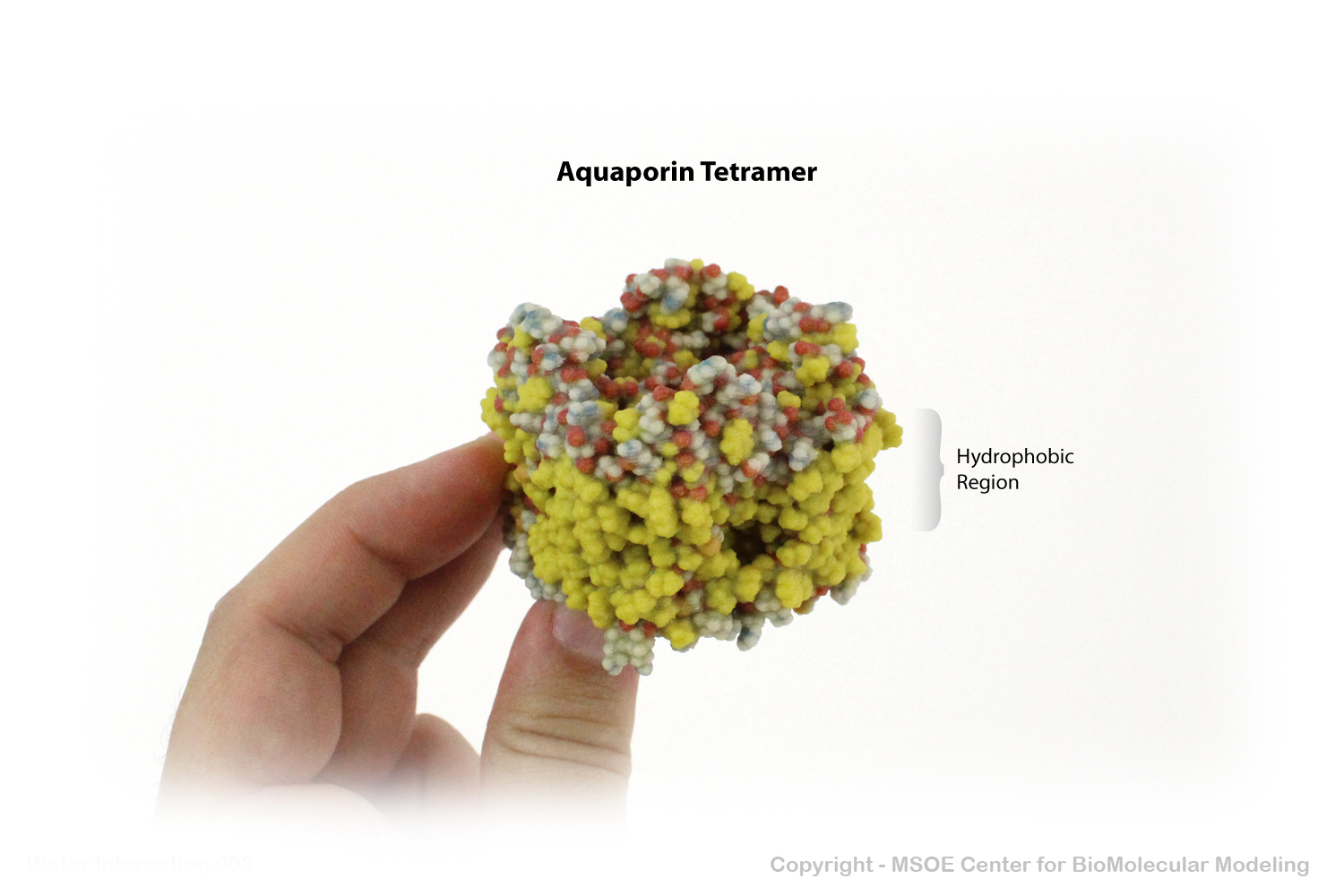

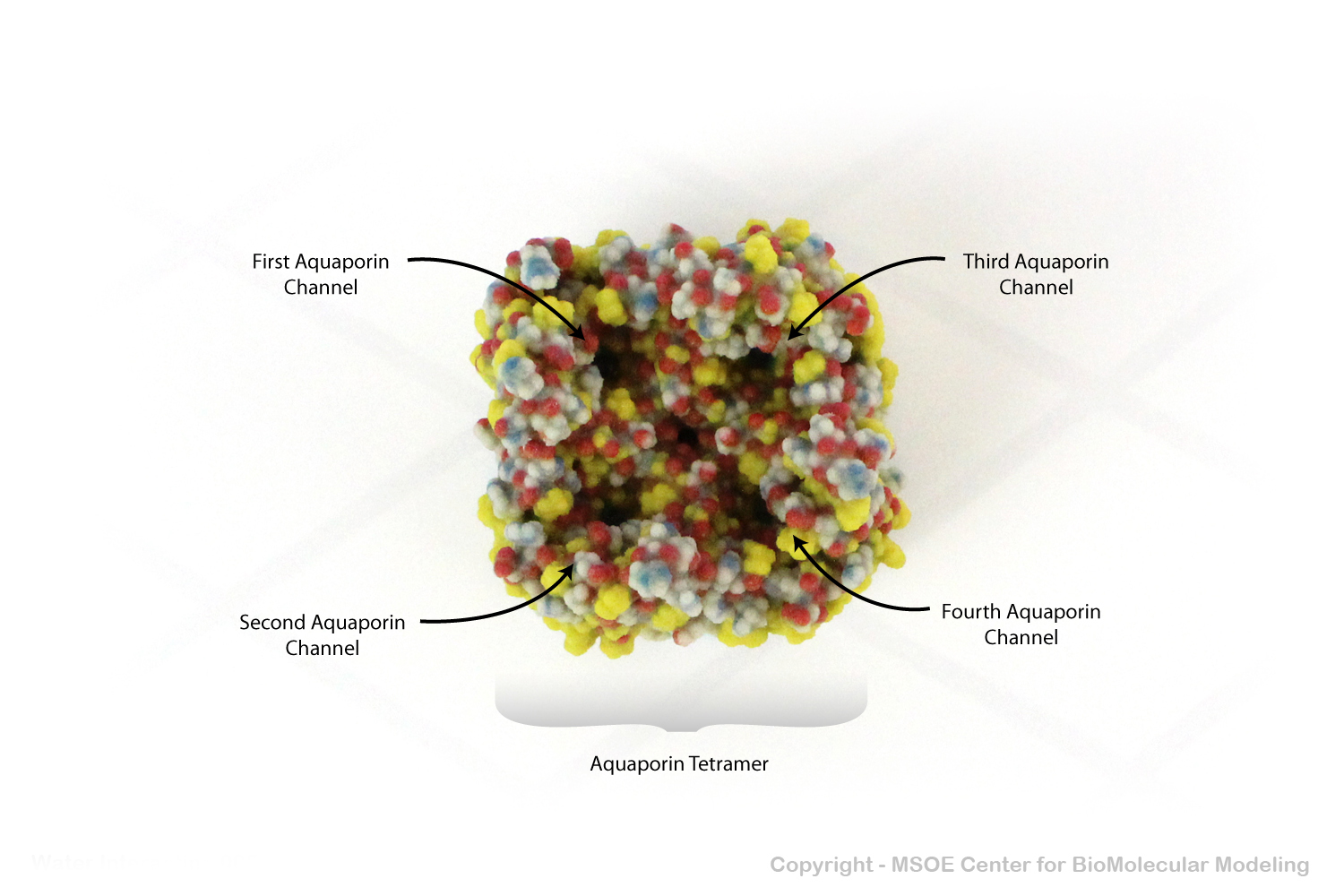
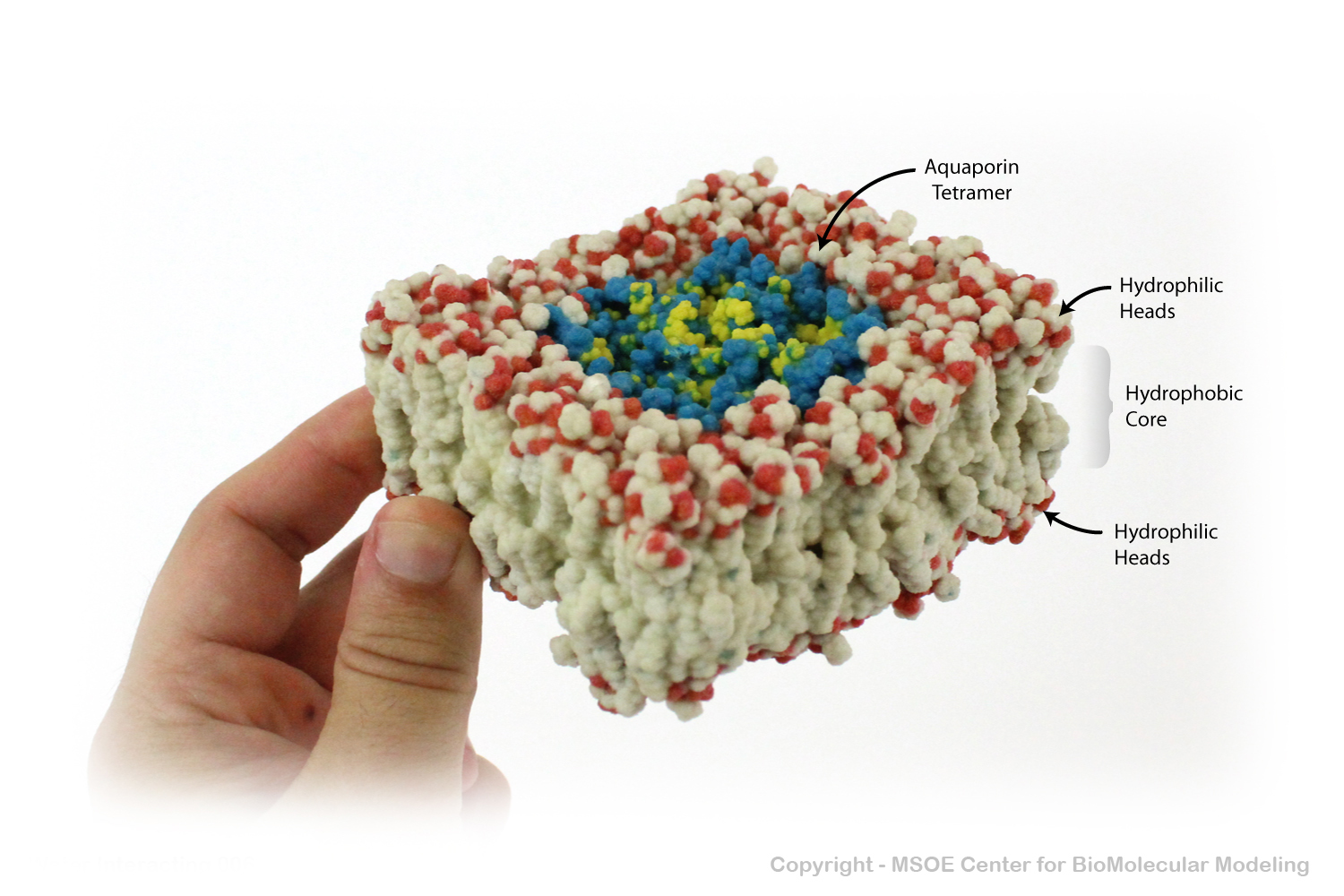

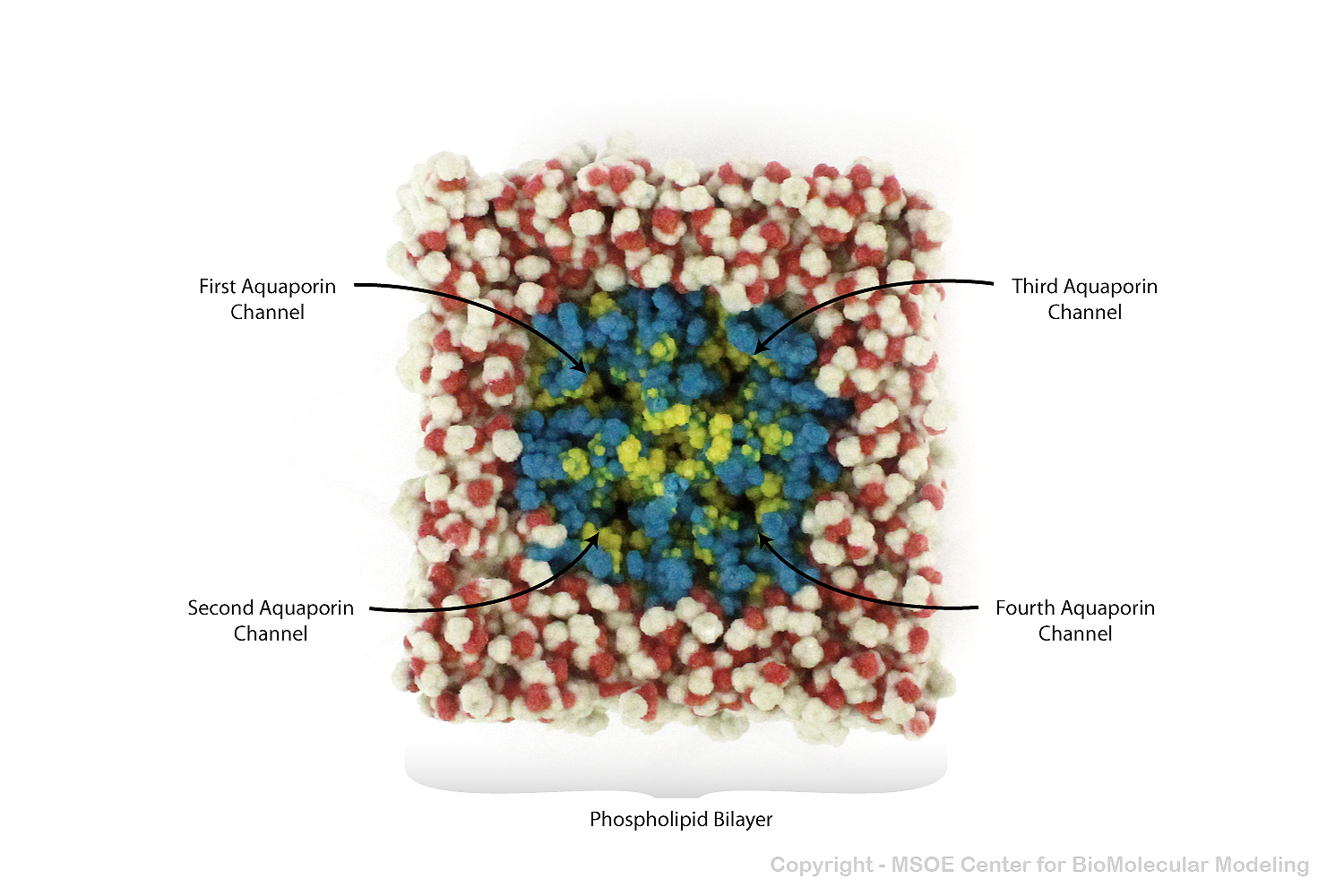

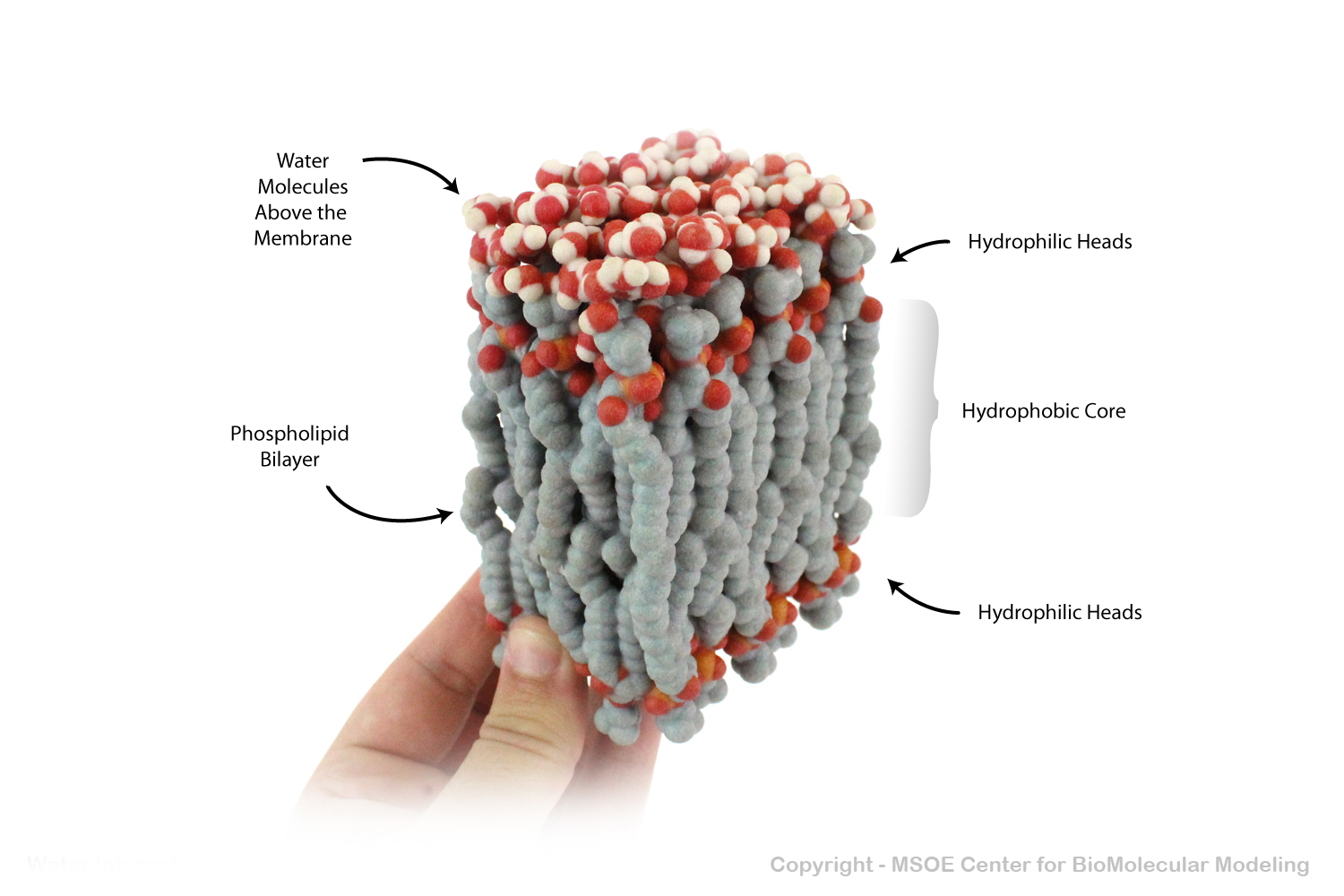
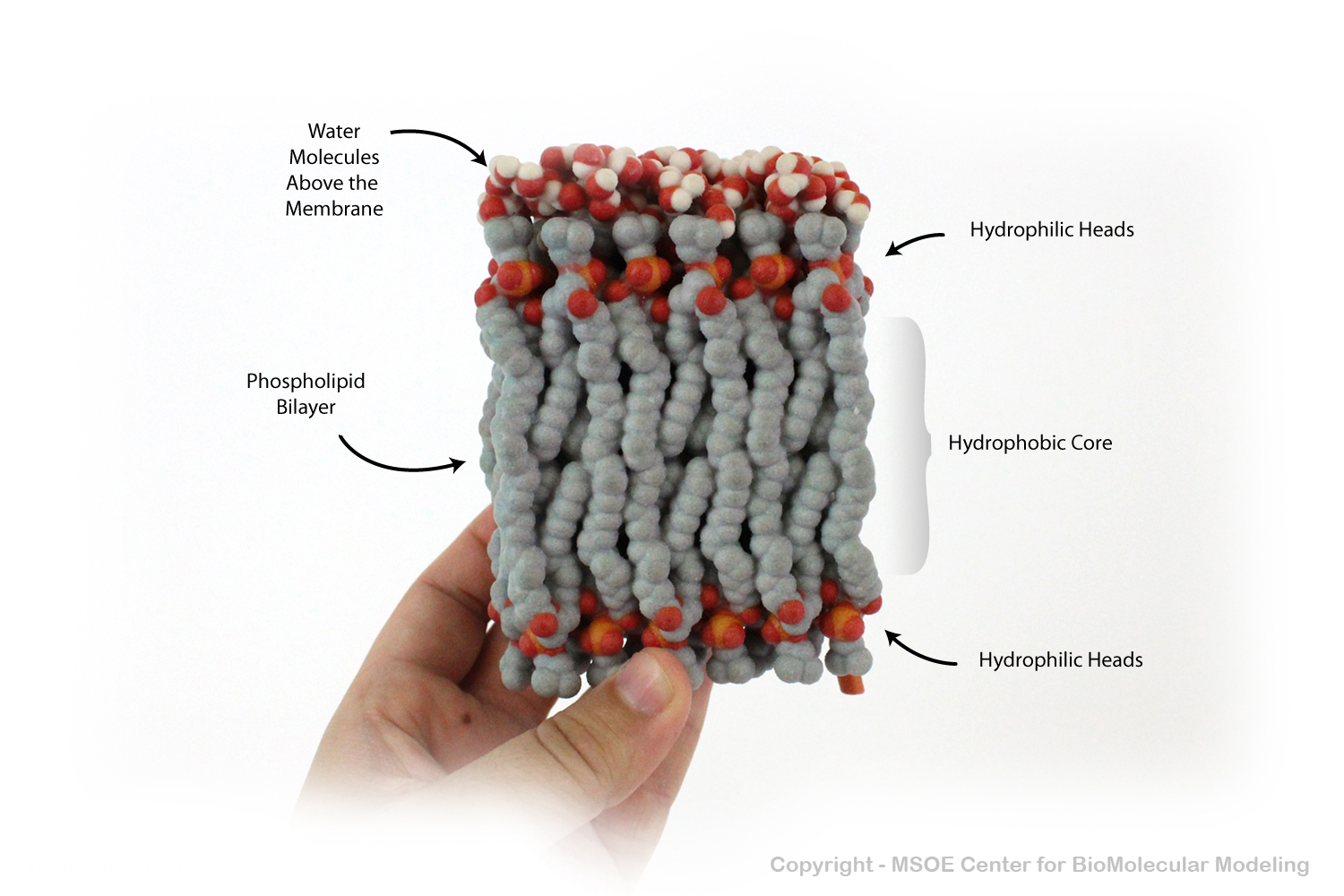



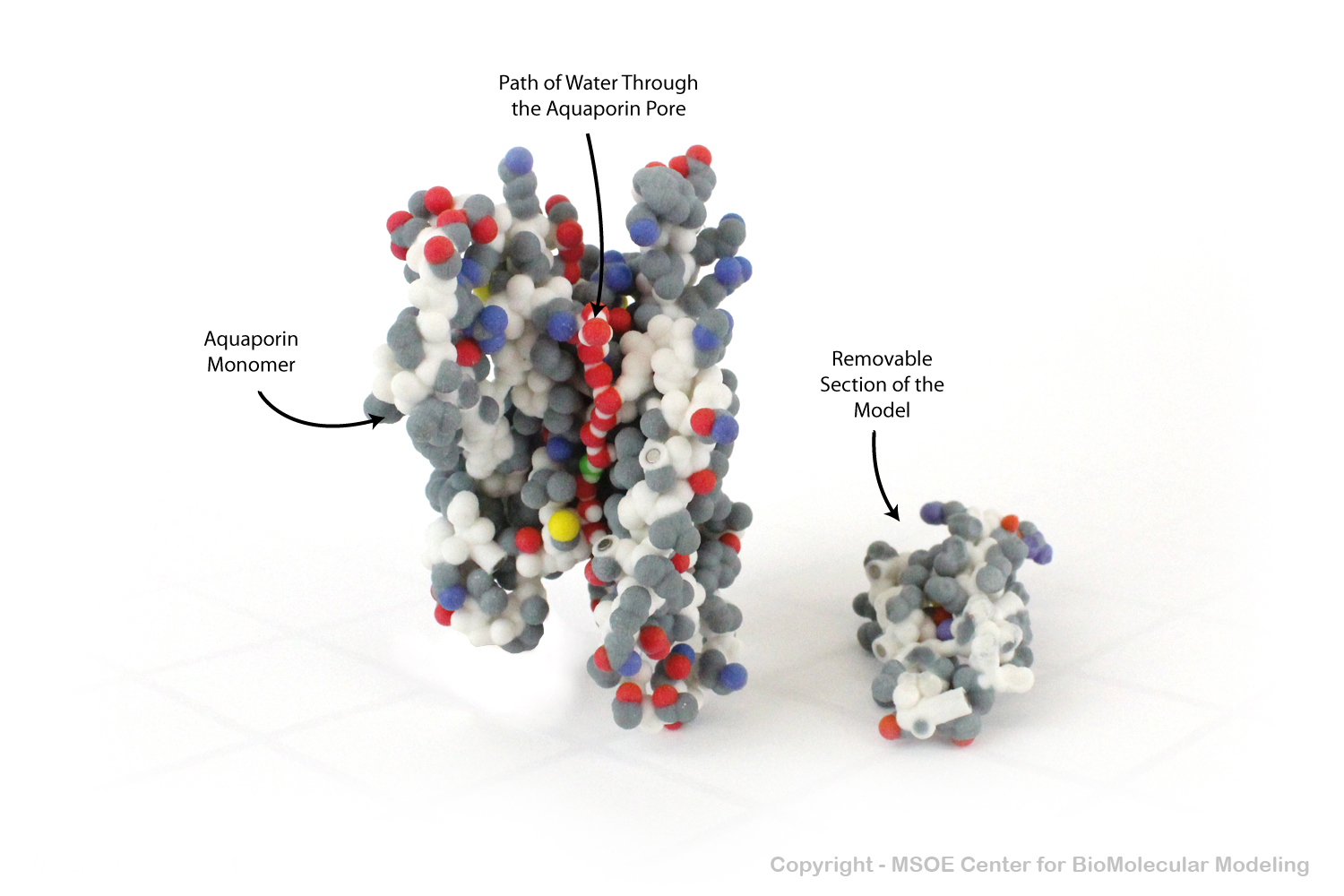
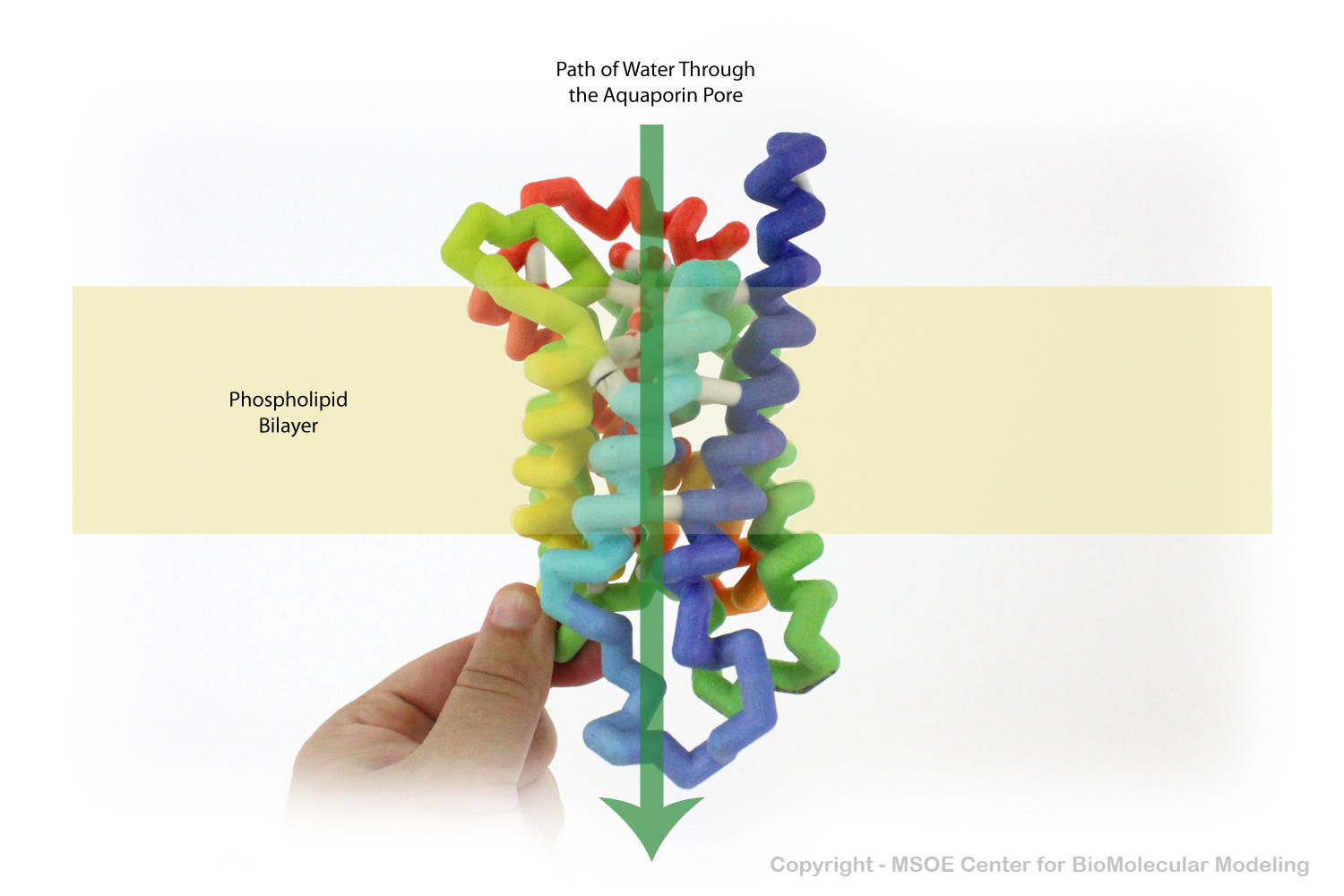
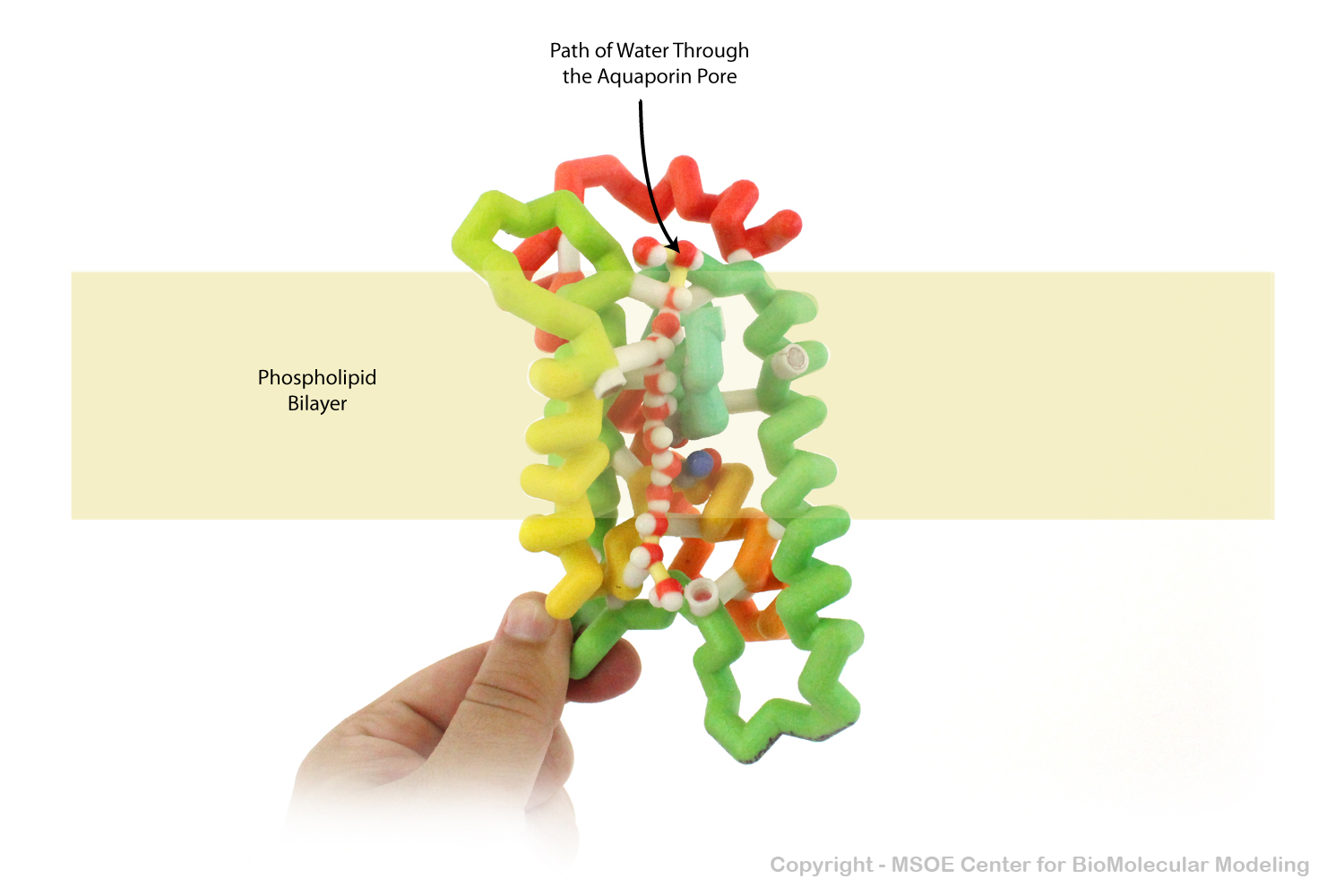
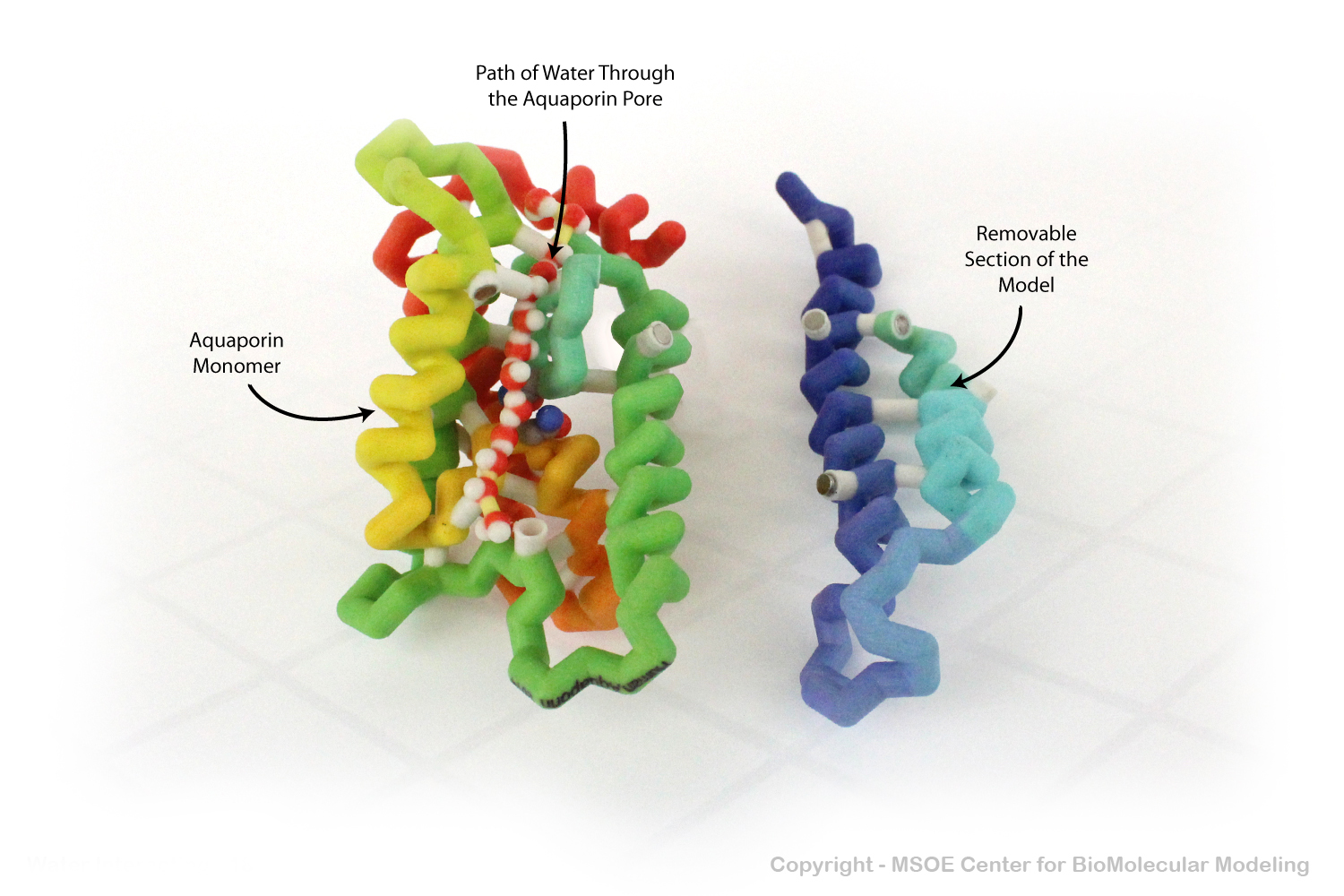
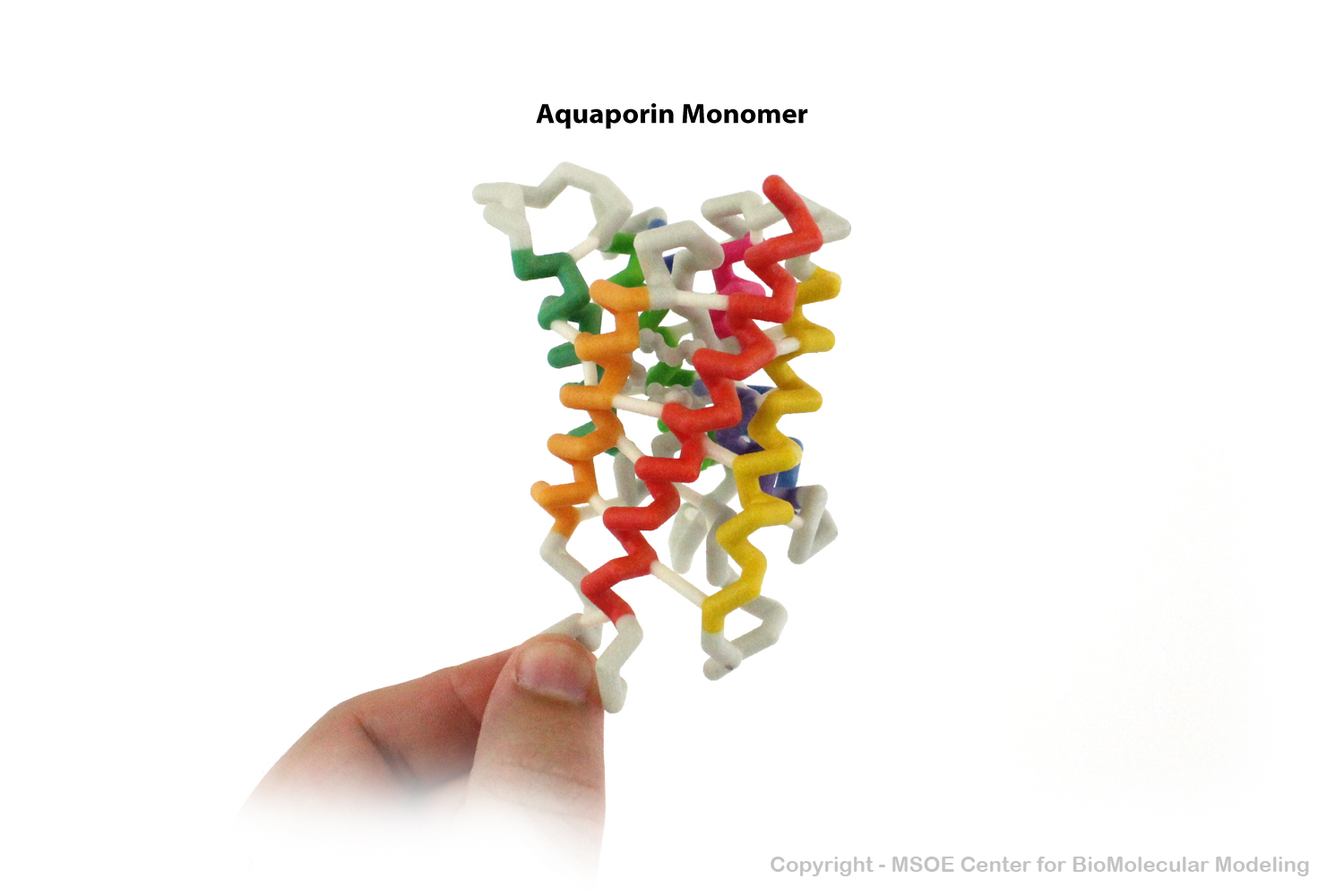
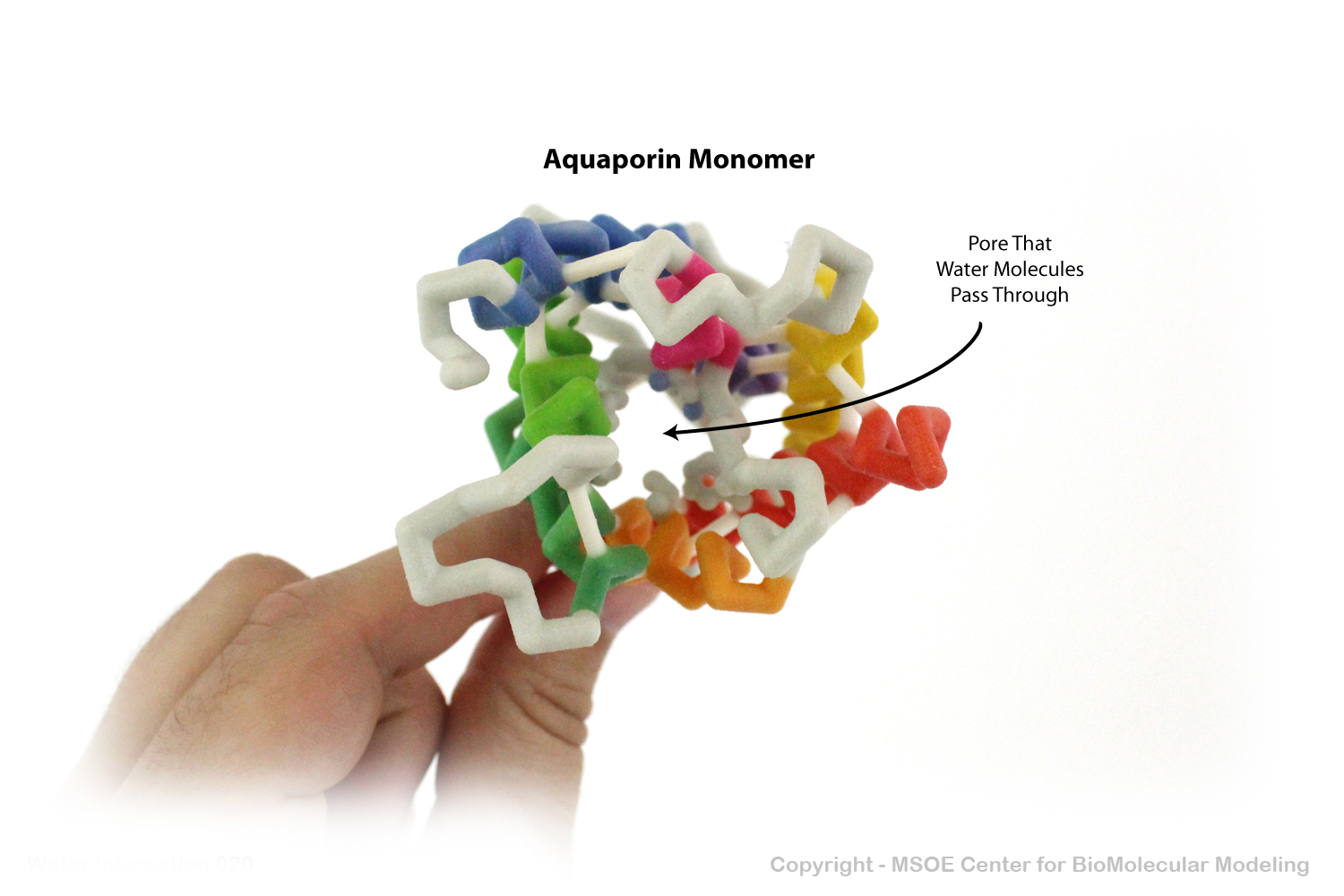

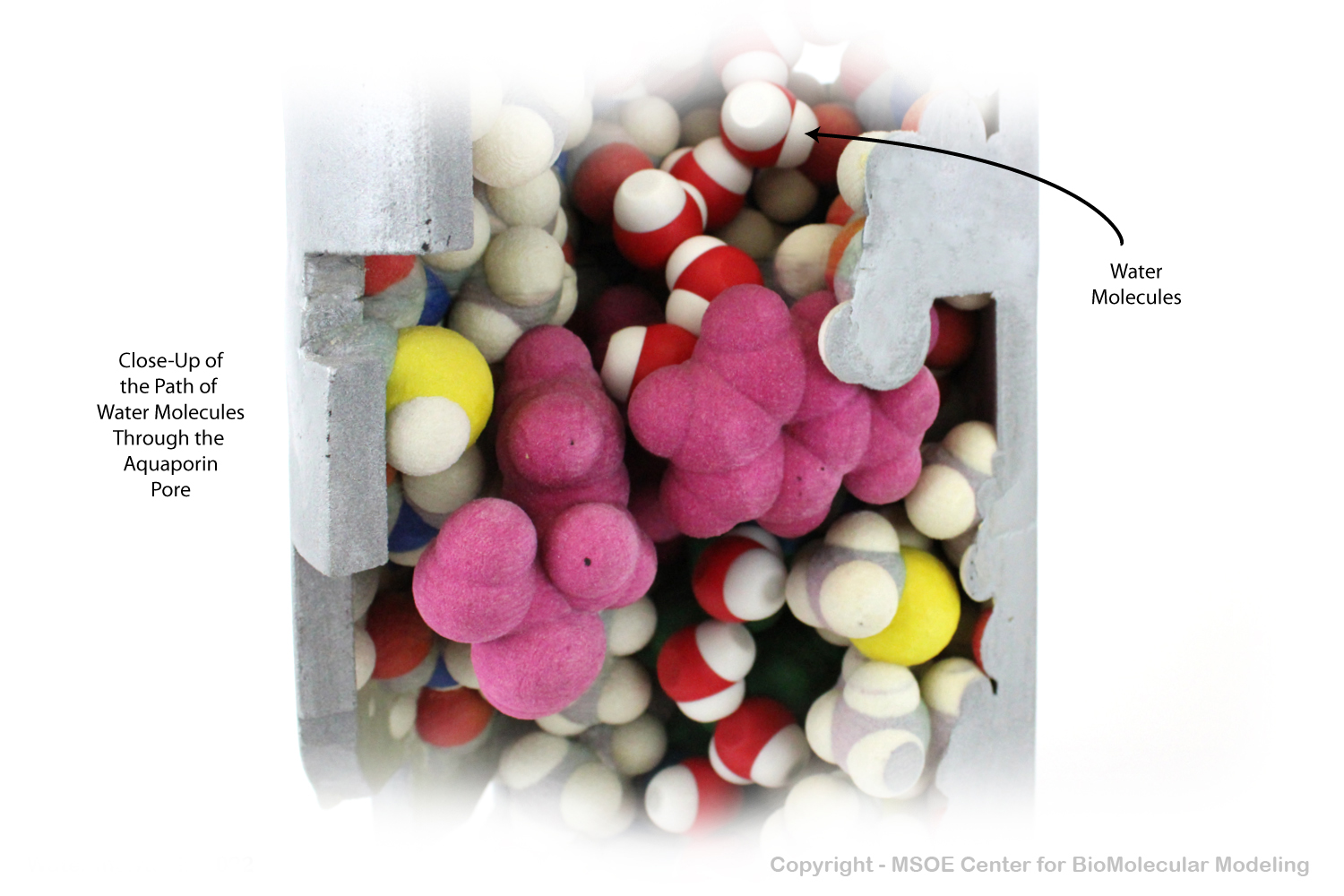
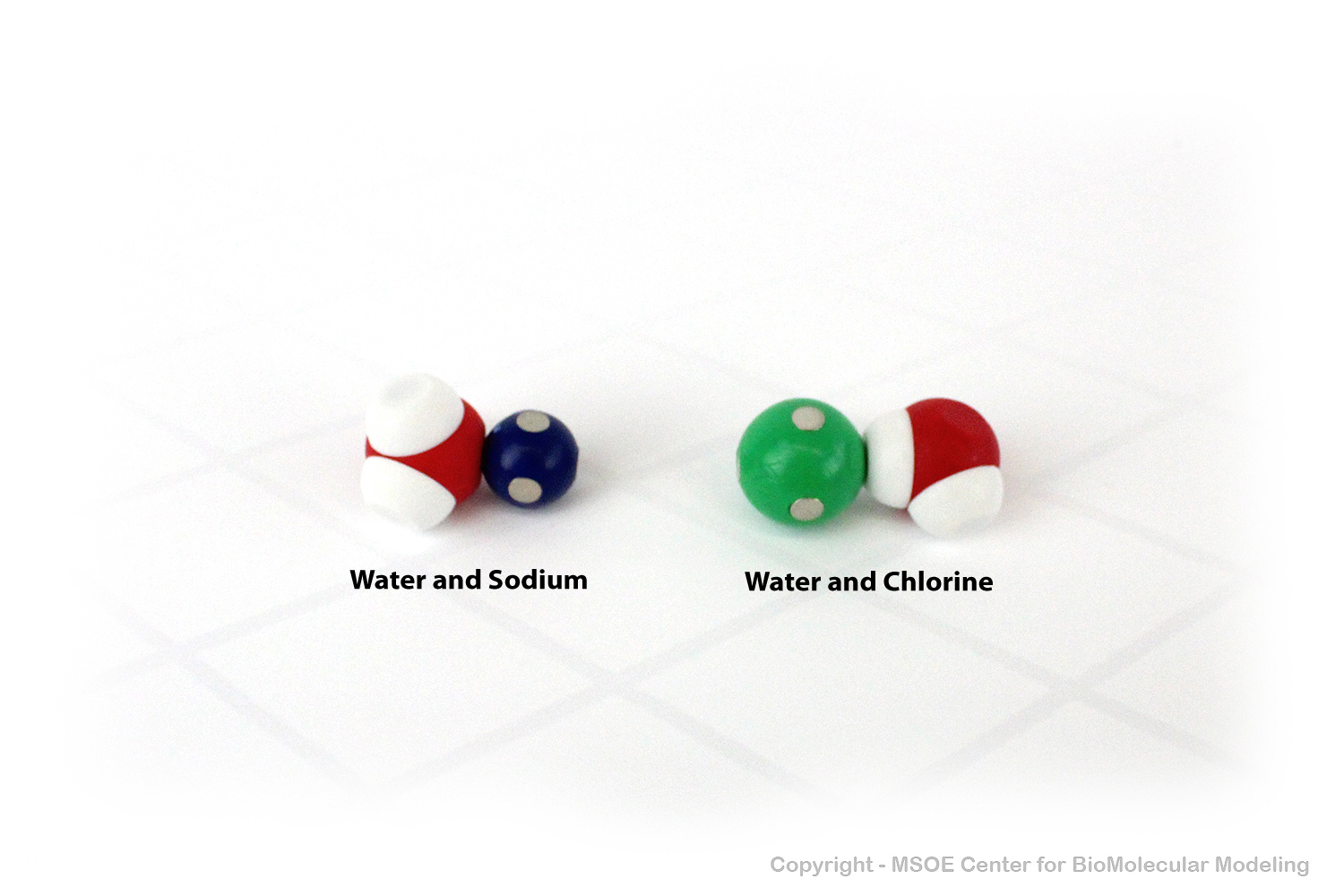
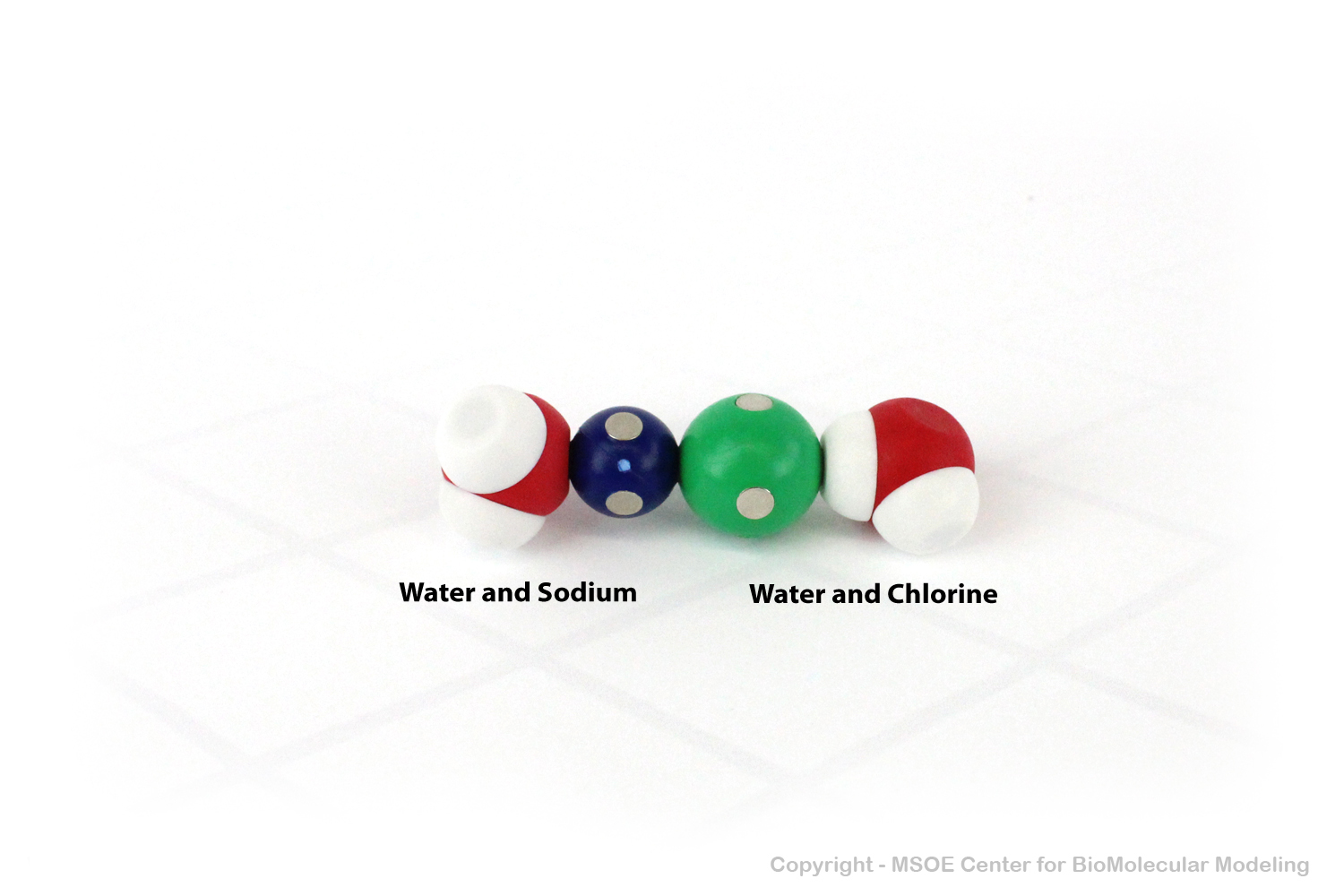

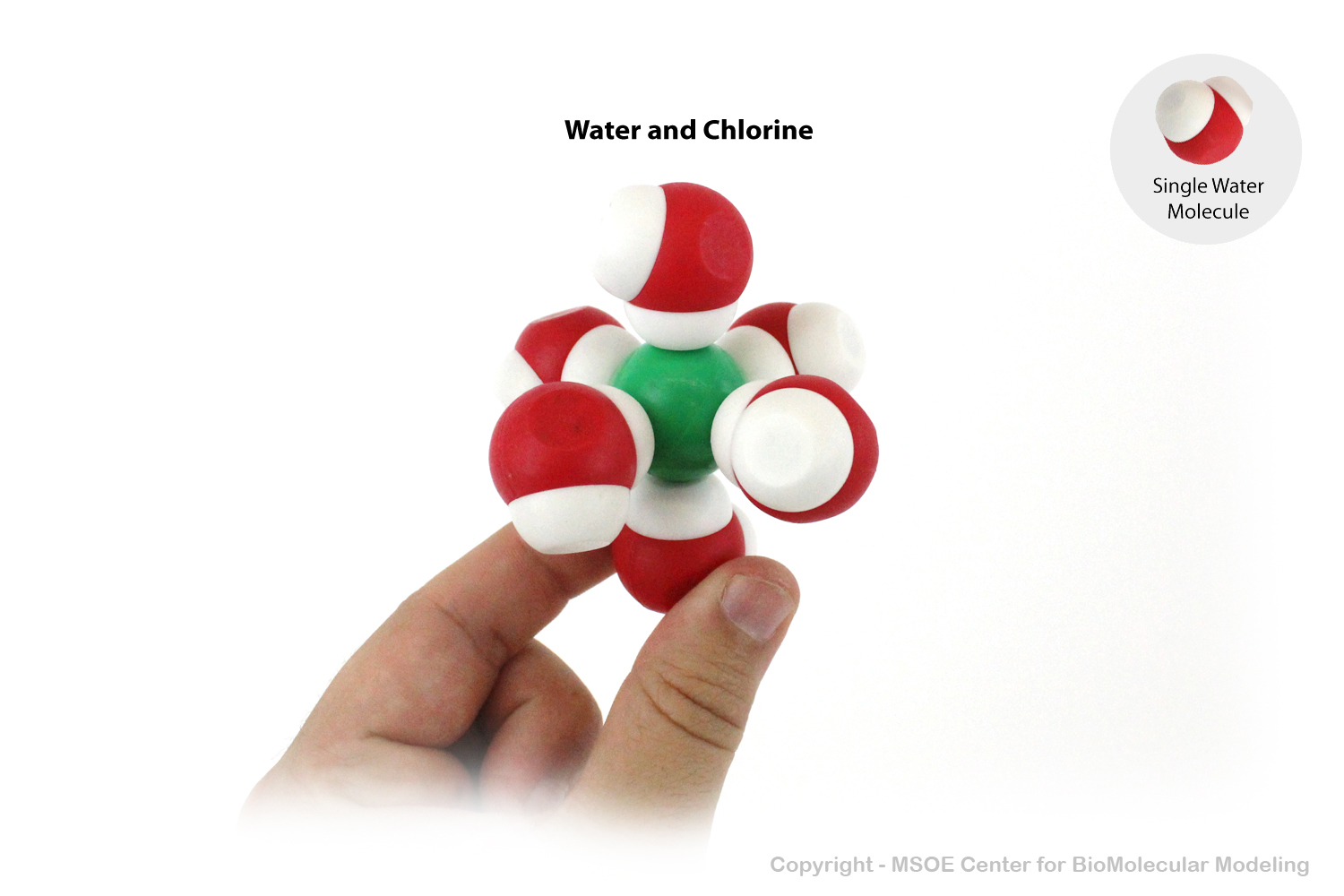
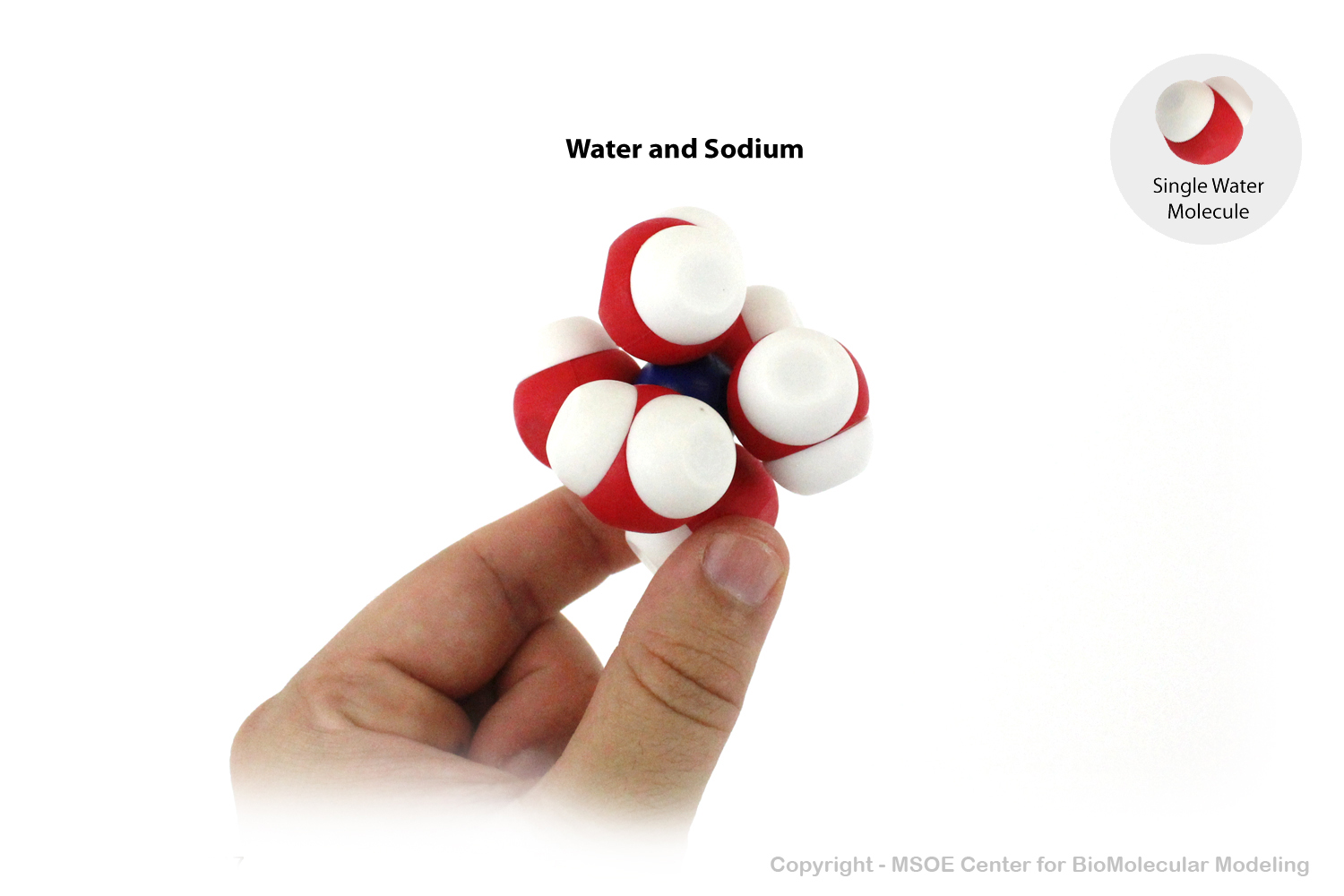
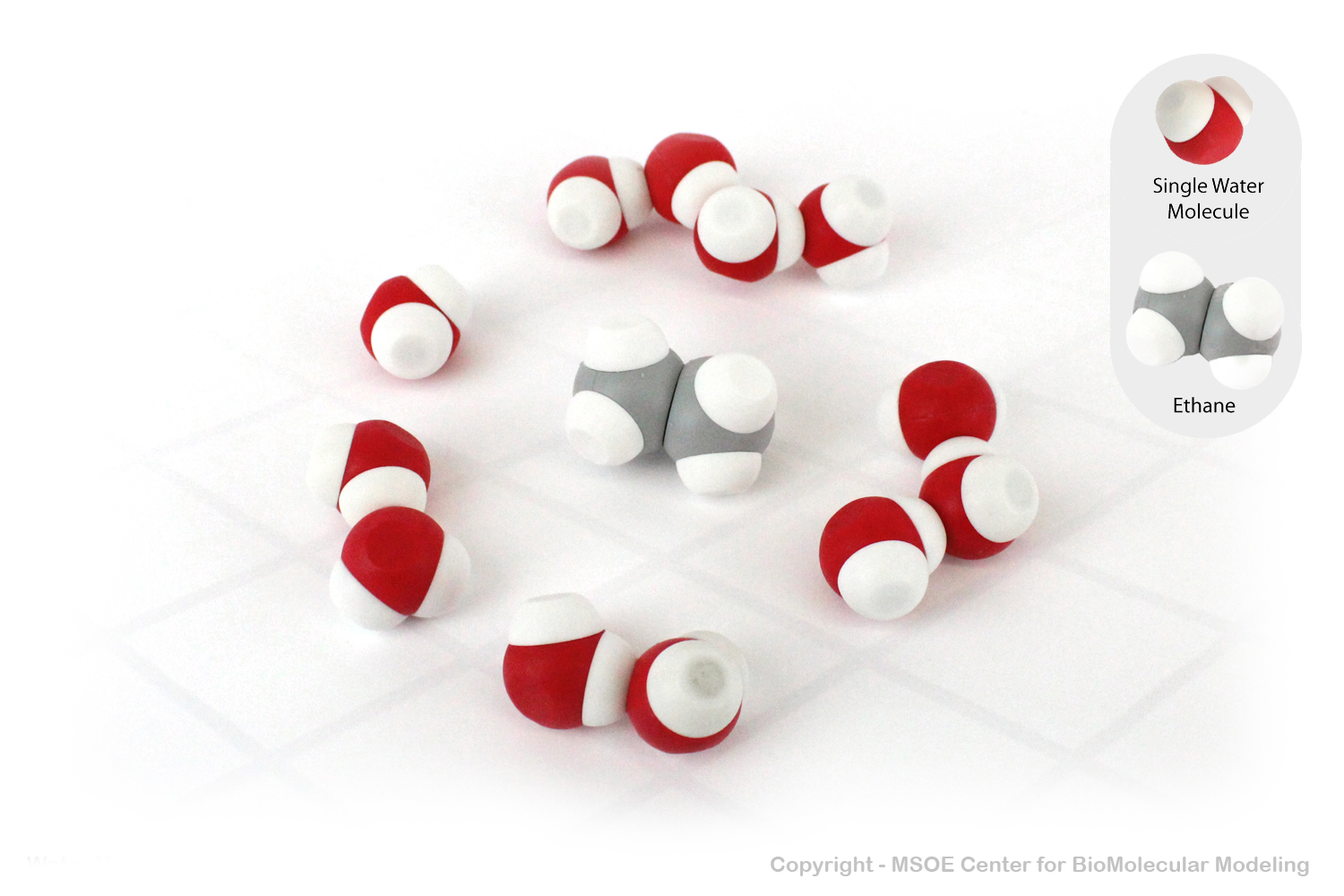
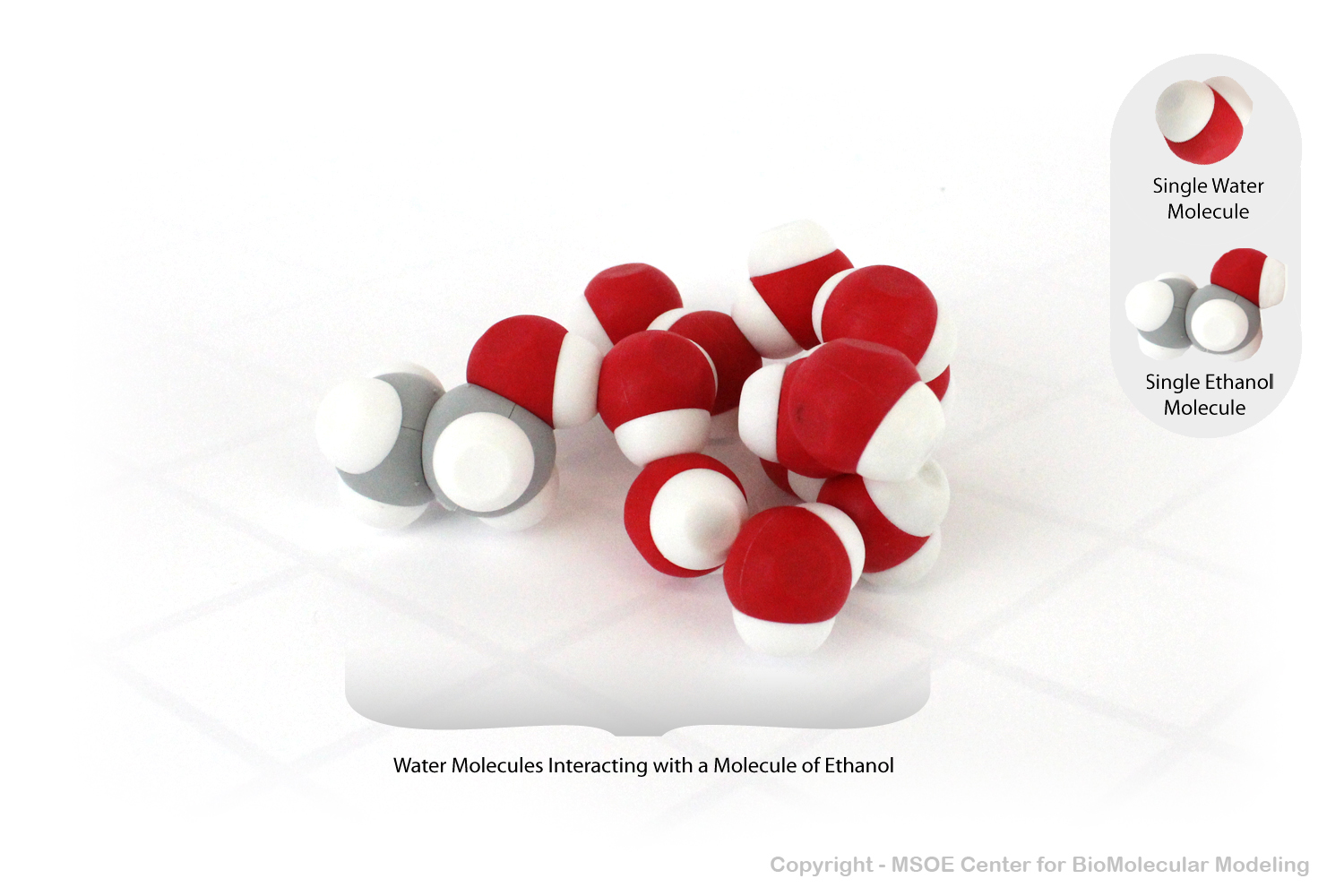
Aquaporin is a highly selective protein channel that allows water molecules to cross a phospholipid bilayer (membrane). This model shows a cross section of the aquaporin protein, revealing the path of the water molecules through the pore.
Aquaporin is a highly selective protein channel that allows water molecules to cross a phospholipid bilayer (membrane). This model shows a cross section of the aquaporin protein, revealing the path of the water molecules through the pore.
Aquaporin is a highly selective protein channel that allows water molecules to cross a phospholipid bilayer (membrane). This model shows an aquaporin tetramer, comprised of four identical aquaporin protein chains. The membrane-embedded hydrophobic region has been highlighted with yellow.
Aquaporin is a highly selective protein channel that allows water molecules to cross a phospholipid bilayer (membrane). This model shows an aquaporin tetramer, comprised of four identical aquaporin protein chains. The membrane-embedded hydrophobic region has been highlighted with yellow.
Aquaporin is a highly selective protein channel that allows water molecules to cross a phospholipid bilayer (membrane). This model shows an aquaporin tetramer, comprised of four identical aquaporin protein chains with four pores.
Aquaporin is a highly selective protein channel that allows water molecules to cross a phospholipid bilayer (membrane). This model shows an aquaporin tetramer, comprised of four identical aquaporin protein chains, embedded in a membrane.
Aquaporin is a highly selective protein channel that allows water molecules to cross a phospholipid bilayer (membrane). This model shows an aquaporin tetramer, comprised of four identical aquaporin protein chains, embedded in a membrane.
Aquaporin is a highly selective protein channel that allows water molecules to cross a phospholipid bilayer (membrane). This model shows an aquaporin tetramer, comprised of four identical aquaporin protein chains, embedded in a membrane.
Aquaporin is a highly selective protein channel that allows water molecules to cross a phospholipid bilayer (membrane). This model shows an aquaporin tetramer, comprised of four identical aquaporin protein chains, embedded in a membrane.
Phospholipid Bilayers (membranes) have a carbon-rich hydrophobic core that prevents polar water from crossing. In this model, water molecules are shown above the membrane, unable to pass to the bottom.
Phospholipid Bilayers (membranes) have a carbon-rich hydrophobic core that prevents polar water from crossing. In this model, water molecules are shown above the membrane, unable to pass to the bottom.
Phospholipid Bilayers (membranes) have a carbon-rich hydrophobic core that prevents polar water from crossing. In this model, water molecules are shown above the membrane, unable to pass to the bottom.
Aquaporin is a highly selective protein channel that allows water molecules to cross a phospholipid bilayer (membrane).
Aquaporin is a highly selective protein channel that allows water molecules to cross a phospholipid bilayer (membrane). This model includes a removable section of the aquaporin protein, revealing the path of the water molecules through the pore.
Aquaporin is a highly selective protein channel that allows water molecules to cross a phospholipid bilayer (membrane). This model includes a removable section of the aquaporin protein, revealing the path of the water molecules through the pore.
Aquaporin is a highly selective protein channel that allows water molecules to cross a phospholipid bilayer (membrane).
Aquaporin is a highly selective protein channel that allows water molecules to cross a phospholipid bilayer (membrane). This model includes a removable section of the aquaporin protein, revealing the path of the water molecules through the pore.
Aquaporin is a highly selective protein channel that allows water molecules to cross a phospholipid bilayer (membrane). This model includes a removable section of the aquaporin protein, revealing the path of the water molecules through the pore.
Aquaporin is a highly selective protein channel that allows water molecules to cross a phospholipid bilayer (membrane). This model includes a removable section of the aquaporin protein, revealing the path of the water molecules through the pore.
Aquaporin is a highly selective protein channel that allows water molecules to cross a phospholipid bilayer (membrane). This model highlights the seven transmembrane helices that make up the aquaporin protein.
Aquaporin is a highly selective protein channel that allows water molecules to cross a phospholipid bilayer (membrane). This model highlights the seven transmembrane helices that make up the aquaporin protein.
Aquaporin is a highly selective protein channel that allows water molecules to cross a phospholipid bilayer (membrane). This model highlights the path of water through the pore of the channel protein.
Aquaporin is a highly selective protein channel that allows water molecules to cross a phospholipid bilayer (membrane). This model highlights the path of water through the pore of the channel protein.
Sodium and Chlorine are two simple ions that can interact with water molecules. Sodium has a positive charge and is drawn to the oxygen atom in a water molecule, while chlorine is negatively charged and is drawn to the hydrogen atoms in a water molecule.
Sodium and Chlorine are two simple ions that can interact with water molecules. Sodium has a positive charge and is drawn to the oxygen atom in a water molecule, while chlorine is negatively charged and is drawn to the hydrogen atoms in a water molecule.
Sodium and Chlorine are two simple ions that can interact with water molecules. Sodium has a positive charge and is drawn to the oxygen atom in a water molecule, while chlorine is negatively charged and is drawn to the hydrogen atoms in a water molecule.
Chlorine is a simple ions that can interact with water molecules. It has a negative charge and is drawn to the hydrogen atoms in a water molecule.
Sodium is a simple ions that can interact with water molecules. It has a positive charge and is drawn to the oxygen atom in a water molecule.
Ethane is a simple molecule that does not like to interact with water molecules. It is comprised of only carbon and hydrogen, making it hydrophobic.
Ethanol is a simple molecule that can interact with water molecules. Unlike ethane, it has a single oxygen atom, making it partially hydrophilic.





























